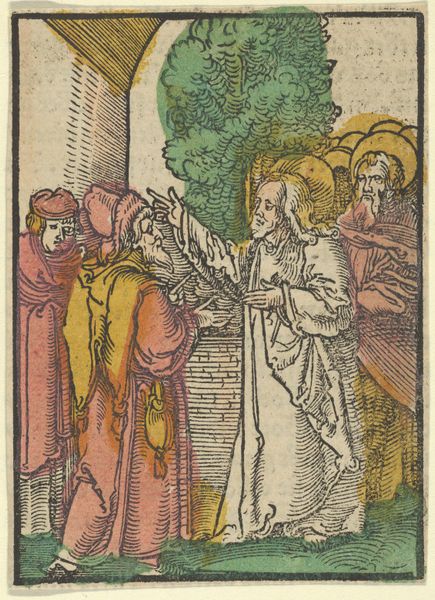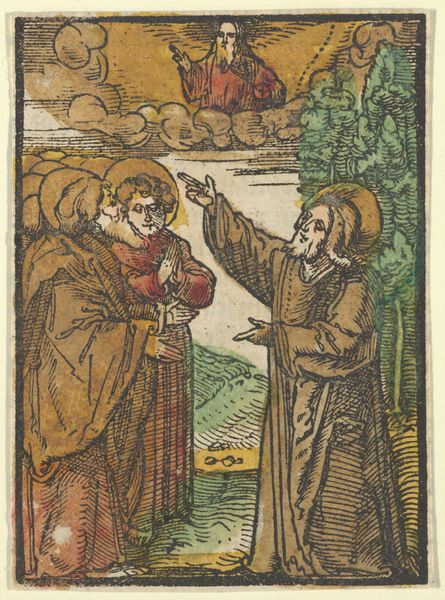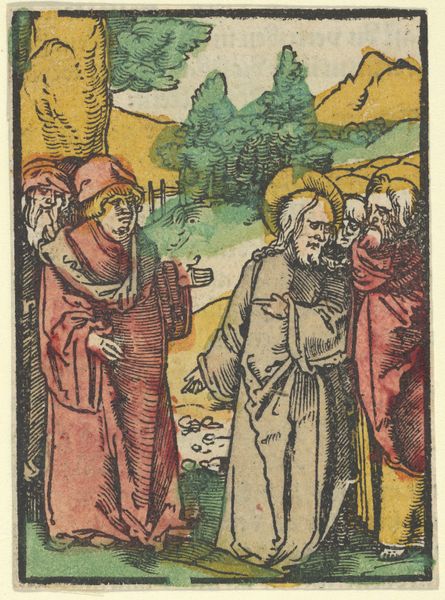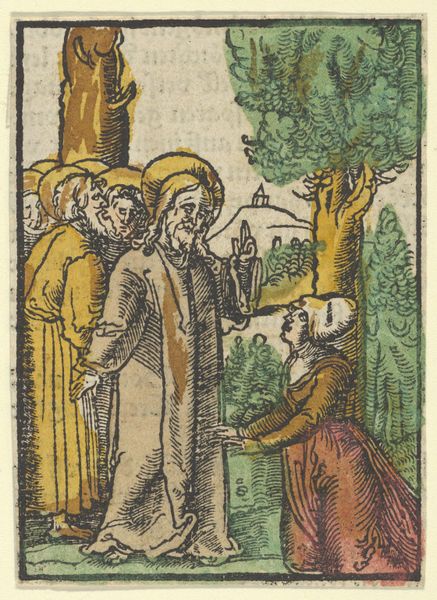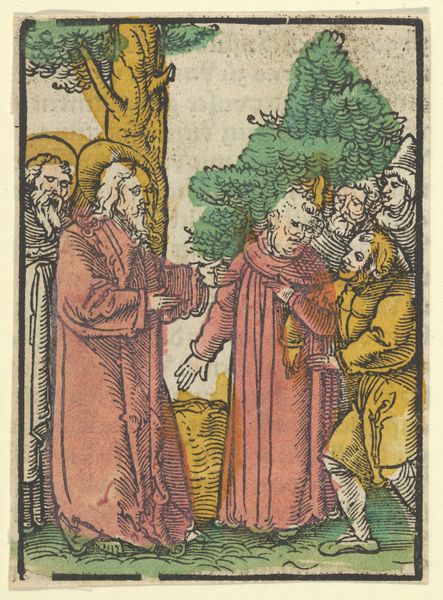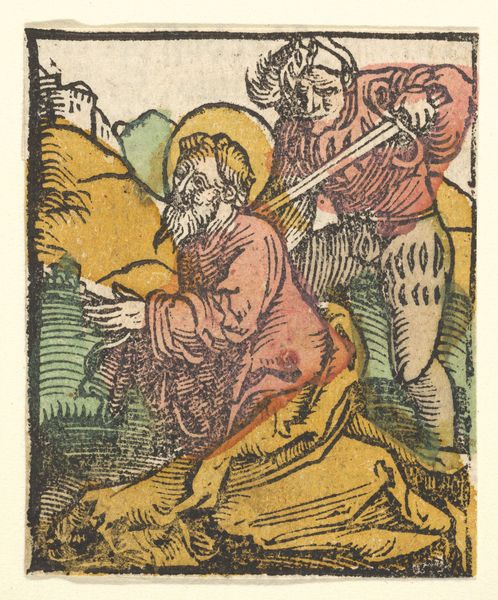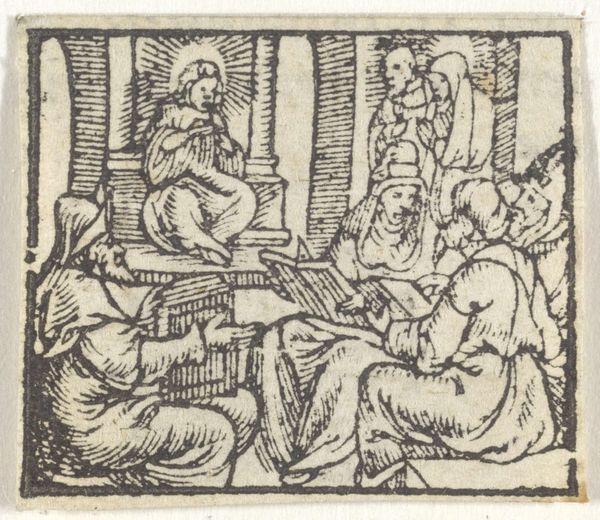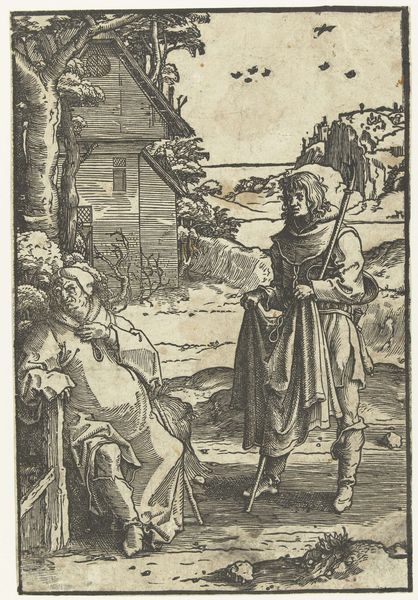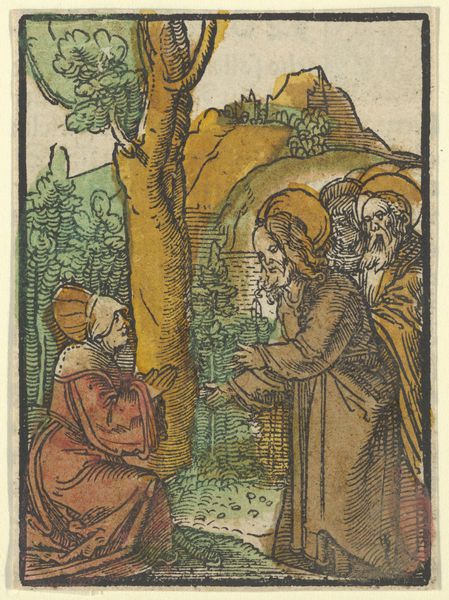
drawing, print, woodcut
#
drawing
#
narrative-art
# print
#
figuration
#
woodcut
#
history-painting
#
northern-renaissance
#
christ
Dimensions: Sheet: 3 11/16 × 2 11/16 in. (9.4 × 6.8 cm)
Copyright: Public Domain
Curator: We're looking at Hans Schäufelein's "Christ Healing the Leper, from Das Plenarium," created in 1517. It's a woodcut, and remarkably, it's also hand-colored. Editor: It's incredibly graphic and immediate. The high contrast, especially the black lines against these soft colors, strikes me first. It really emphasizes the textures and, frankly, the suffering etched into the leper's face. Curator: Absolutely. Knowing this was part of "Das Plenarium," a book meant for wider audiences, we see a simplified narrative aimed at accessibility. Woodcuts were relatively inexpensive to produce, making religious imagery available to people who might not otherwise encounter it. Notice also that Schäufelein has chosen to color in only certain areas to enhance their importance within the story. Editor: Yes, the limited palette almost directs our gaze. My eyes jump between Christ’s serene face and the grotesque details of the leper’s illness, particularly highlighted by the contrast in their skin tones and clothing. There is something both immediate and yet highly staged in its presentation of healing. Curator: Consider the labor involved. Each print required meticulous carving and multiple stages for the coloring. The repetitive act of printing these images underscores the mechanical processes of early mass communication during that period. The work that went into producing "Das Plenarium" reflects broader changes impacting social structures and theological authority. Editor: Thinking about the composition, it strikes me how the figures are positioned—the supplicant presented to this active figure. The tree is very odd; it separates and highlights the two groupings but appears flattened at the top. Is it supposed to indicate divine will, or is it strictly there as set-dressing? I suspect a symbolic framing here. Curator: That’s a perceptive point! Such stylistic choices would resonate with the context of Reformation-era Germany, when printed imagery could act as both a religious expression and a tool for propagating specific belief systems. Schäufelein navigates both roles here effectively. Editor: For me, it remains powerfully symbolic; you have divine empathy reaching the depths of human suffering with nature serving as witness. Curator: A beautiful perspective to conclude on, one which adds further value to understanding the historical production and viewing of this hand-colored print.
Comments
No comments
Be the first to comment and join the conversation on the ultimate creative platform.

